
Table of Contents


 Authors
Authors
Anthony J. Trevor, PhD
Professor Emeritus of Pharmacology and Toxicology
Department of Cellular & Molecular Pharmacology
University of California, San Francisco
Bertram G. Katzung, MD, PhD
Professor Emeritus of Pharmacology
Department of Cellular & Molecular Pharmacology
University of California, San Francisco
Susan B. Masters, PhD
Professor & Academy Chair of Pharmacology Education
Department of Cellular & Molecular Pharmacology
University of California, San Francisco



 Preface
Preface
This book is designed to help students review pharmacology and to prepare for both regular course examinations and board examinations. The ninth edition has been extensively revised to make such preparation as active and efficient as possible. As with earlier editions, rigorous standards of accuracy and currency have been maintained in keeping with the book's status as the companion to the Basic & Clinical Pharmacology textbook. This review book divides pharmacology into the topics used in most courses and textbooks. Major introductory chapters (eg, autonomic pharmacology and CNS pharmacology) are included for integration with relevant physiology and biochemistry. The chapter-based approach facilitates use of this book in conjunction with course notes or a larger text. We recommend several strategies to make reviewing more effective.
First, each chapter has a short discussion of the major concepts that underlie its basic principles or drug group, accompanied by explanatory figures and tables. The figures are now in full color and many are new to this edition. Read the text thoroughly before you attempt to answer the study questions at the back of each chapter. If you find a concept difficult or confusing, consult a regular textbook, such as Basic and Clinical Pharmacology.
Second, each drug-oriented chapter opens with a " Drug Tree " that organizes the group of drugs visually. You should practice reproducing the Drug Tree diagram from memory.
Third, a list of High-Yield Terms to Learn and their definitions is near the front of most chapters. Make sure that you can define those terms.
Fourth, many chapters contain a " Skill Keeper " question that prompts you to review previous material and to see links between related topics. Try to answer the Skill Keeper questions on your own before checking the Skill Keeper answers that are provided at the end of the chapter.
Fifth, each chapter contains sample questions followed by a set of answers with explanations. For most effective learning, take each set of sample questions as if it were a real examination. After you have answered every question, work through the answers. When you are analyzing the answers, make sure that you understand why each choice is either correct or incorrect.
Sixth, each chapter includes a Checklist of focused tasks that you should be able to do once you have finished the chapter.
Seventh, each drug-oriented chapter ends with a Summary Table that lists the important drugs and includes key information concerning their mechanisms of action, effects, clinical uses, pharmacokinetics, drug interactions, and toxicities.
Eighth, when preparing for a comprehensive examination, you should review the list of drugs in Appendix I: Key Words for Key Drugs. Do this at the same time that you work your way through the chapters so that you can begin to recognize drugs out of the context of a chapter that discusses a restricted set of drugs.
Ninth, after you have worked your way through most or all of the chapters and have a good grasp of the Key Drugs, you should take the comprehensive examinations presented in Appendices II and III. These examinations are followed by a list of answers and the numbers of the chapters in which the answers are explained. Again, we recommend that you take an entire examination or a block of questions as if it were a real examination; commit to answers for the whole set before you check the answers. As you work though the answers, make sure you understand why each distracter is either correct or incorrect. If you need to, return to the relevant chapter(s) to review the text that covers key concepts and facts that form the basis of the question.
Tenth, you can use strategies in Appendix IV for improving your test performance. General advice for studying and approaching exams includes strategies for several types of questions that follow specific formats.
We recommend that this book be used with a regular text. Basic & Clinical Pharmacology , eleventh edition (McGraw-Hill, 2009), follows the chapter sequence used here. However, this review book is designed to complement any standard medical pharmacology text. The student who completes and understands Pharmacology: Examination & Board Review will greatly improve his or her performance on examinations and will have an excellent command of pharmacology.
Because it was developed in parallel with the textbook Basic & Clinical Pharmacology , this review book represents the authors' interpretations of chapters written by contributors to that text. We are very grateful to these contributors, to our other faculty colleagues, and to our studentswho have taught us most of what we know about teaching.
We very much appreciate the invaluable contributions to this text afforded by the editorial team of Alison Kelley, Karen Davis, Harriet Lebowitz, Michael Weitz, and Harleen Chopra, and by Dr. S. Manikandan, Department of Pharmacology, Jawaharlal Institute of Postgraduate Medical Education and Research, Pondicherry, India. The authors also thank Alice Camp, for her expert proofreading contributions to this and earlier editions.
Suggestions and criticisms regarding this study guide should be sent to us at the following address: Department of Cellular & Molecular Pharmacology, Box 0450, University of California School of Medicine, San Francisco, CA 94143-0450, USA.
Anthony J. Trevor, PhD
Bertram G. Katzung, MD, PhD
Susan B. Masters, PhD
chapter 1. Introduction
Introduction
Pharmacology is the body of knowledge concerned with the action of chemicals on biologic systems. Medical pharmacology is the area of pharmacology concerned with the use of chemicals in the prevention, diagnosis, and treatment of disease, especially in humans. Toxicology is the area of pharmacology concerned with the undesirable effects of chemicals on biologic systems. Pharmacokinetics describes the effects of the body on drugs, eg, absorption, excretion, etc. Pharmacodynamics denotes the actions of the drug on the body, such as mechanism of action and therapeutic and toxic effects. This chapter introduces the basic principles of pharmacokinetics and pharmacodynamics that will be applied in subsequent chapters.
The Nature of Drugs
Drugs in common use include inorganic ions, nonpeptide organic molecules, small peptides and proteins, nucleic acids, lipids, and carbohydrates. Some are found in plants or animals, but many are partially or completely synthetic. Many biologically important endogenous molecules and exogenous drugs are optically active; that is, they contain one or more asymmetric centers and can exist as enantiomers. The enantiomers of optically active drugs usually differ, sometimes more than 1000-fold, in their affinity for their biologic receptor sites. Furthermore, such enantiomers may be metabolized at different rates in the body, with important clinical consequences.
Next page
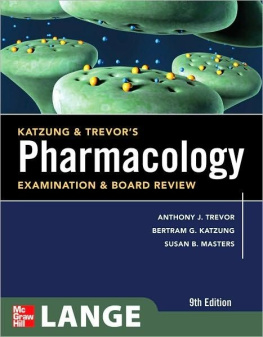
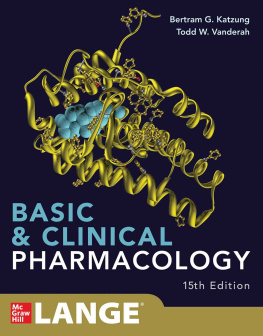

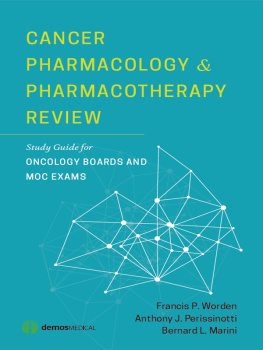
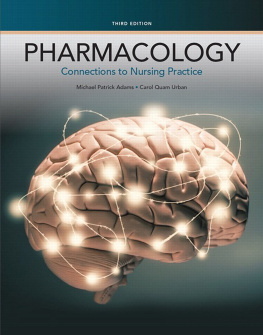
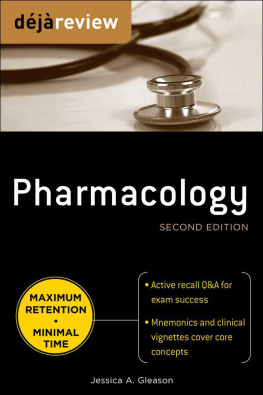



 Authors
Authors


 Preface
Preface